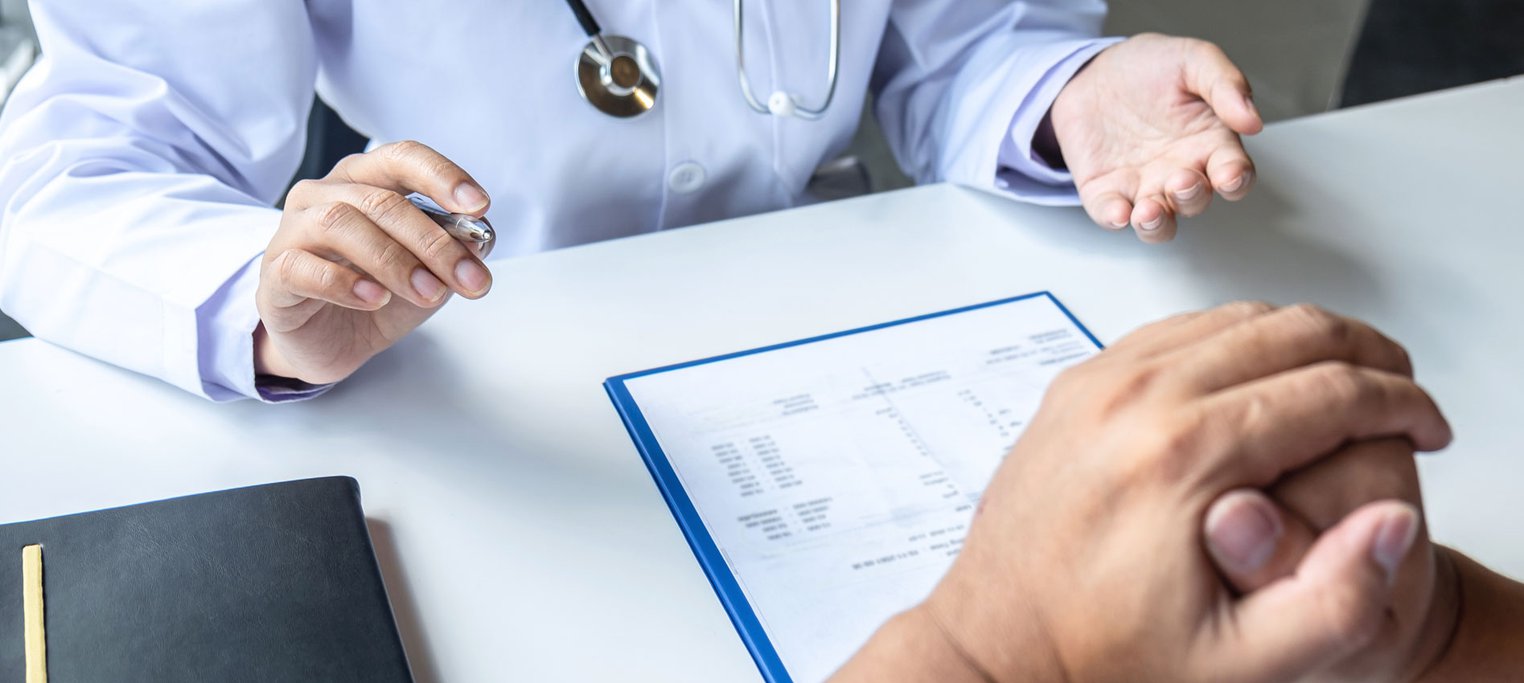August 9, 2021
What is opioid pharmacotherapy?

Every day, hundreds of Australians are impacted by opioid related harms.1, 2
Opioids are drugs that come from the opium poppy plant and act on the opioid receptors in the brain. This includes certain types of painkillers known as ‘opioid pain medications’ as well as illegal drugs, such as heroin.
Some of the most common opioids are:
- codeine (Nurofen Plus®, Panadeine Forte®, Mersyndol®)
- fentanyl (Sublimaze®, Actiq®, Durogesic®)
- morphine (MS Contin®)
- oxycodone (Oxynorm®, OxyContin®, Endone®)
- heroin
- opium.
What are the risks of opioids?
Harms are more likely to occur when prescription opioids (like oxycodone or codeine) are used in a non-prescribed way, or with the use of an illegal opioid like heroin.
Sometimes, harms can occur by using both prescribed and illegal opioids at the same time.3 This can increases your risk of:
- overdose
- becoming dependent on opioids
- long-term physical and mental health concerns
- financial, work or social problems.4,5
There’s help available for anyone struggling with opioid use issues.
And, one of the most common and successful treatment options in Australia is pharmacotherapy.
What is opioid pharmacotherapy?
Opioid pharmacotherapy replaces the opioid drug a person is dependent on with a medically prescribed substitute – such as methadone and buprenorphine.
Methadone comes in a liquid form that you swallow, while buprenorphine comes in a tablet or film form that is dissolved under the tongue.
Both are usually taken daily under supervision at a clinic or pharmacy, but in some instances take-home doses can be approved.
Buprenorphine is also available in a long-acting injectable form (LAIB), with people prescribed LAIB receiving a slow release buprenorphine injection weekly or monthly.3
Methadone is stronger than buprenorphine and can cause overdose if used incorrectly.
Buprenorphine can also cause overdose but it’s less common because of its ‘ceiling effect’ – the drug’s impact on the body hits a ceiling and taking higher doses won’t increase the effect.6
The choice to use buprenorphine or methadone for treatment is a joint decision made between the prescribing doctor and the patient. Some people may try both medications during different stages of their treatment.
How does pharmacotherapy help people?
Methadone and buprenorphine can:
- reduce the pleasurable effects of opioid use
- reduce opioid withdrawal symptoms
- help with cravings.6
Reducing these effects makes a person feel more ‘stable’ and allows them to focus on improving their:
- physical and mental health
- friendships, relationships and general social functioning
- ability to find and maintain a job.6
Some people may wish to reach a point where they are completely free of any opioids, including their pharmacotherapy medications.
For others, pharmacotherapy can help them reduce some of the risky behaviours and health concerns that come with opioid use. For example:
- injecting drug use, which can cause a number of serious health issues, including the transmission of HIV and other blood borne viruses
- potential for overdose
- criminal behaviour associated with ‘scoring’ illegal opioids.6, 7
Some people will require lifelong treatment for their opioid use and pharmacotherapy should be provided together with support for any other issues they might be experiencing, such as mental health, finances, housing, food stability or relationships.6
Alcohol and other drug (AOD) counselling services should also be offered in combination with pharmacotherapy treatment. This can help improve the likelihood of treatment success.6
Naloxone
Anyone on opioid pharmacotherapy treatment should also have access to naloxone.
In fact, anyone who uses opioids, or knows someone who uses opioids, should have access to naloxone.
Naloxone is a life-saving drug that can temporarily reverse an opioid overdose. Signs of an overdose may include:
- cold, clammy skin
- small pupils
- decreased awareness or responsiveness
- slow or irregular heartbeat
- slowed breathing
- falling asleep or ‘going on the nod’.4, 5
Traditionally, naloxone has been used by medical professionals such as paramedics or police in emergency overdose situations. Now, ‘take home’ naloxone kits, which can be carried around anywhere, are available to all members of the community.
Anyone can administer take home naloxone when an overdose has occurred.
It’s available in a syringe form that’s injected directly into the muscle, or a spray that goes directly into the nose.
Take home naloxone is easy to use and instructions are included with each product. You can also speak to prescribing pharmacists, doctors or AOD service providers for information and training on proper use.
Where can I get naloxone?
Naloxone can be prescribed by a doctor in all states and territories.
You can also get it from any community or hospital-based pharmacy, however there are different conditions in different states - it is free in NSW, SA and WA under the take home naloxone program8 and available for a small fee everywhere else.
The take home naloxone pilot also includes free access in alcohol and drug treatment centres and custodial release programs in NSW, SA and WA.8
Naloxone is also freely available at needle and syringe (NSP) programs across VIC, NSW, SA, TAS and WA.
For more information on naloxone, visit:
- Overdose Lifesavers
- Report - Understanding the impediments to uptake and diffusion of take-home naloxone in Australia
Pharmacotherapy can be difficult to access
Despite the success of pharmacotherapy, accessing this treatment can be difficult for some.
Cost
Pharmacotherapy is more expensive than other medications. For each daily dose, a dispensing fee is charged. These fees cost around $35-50 a week and can create financial challenges, particularly for those on fixed income, disability benefit or welfare support.7,9
Location
Some people may have living situations that make it difficult to attend a pharmacy or clinic daily. If these services are not close to where they live, it can be time consuming and costly to travel there, and may interrupt other life commitments such as work or family needs.7
Stigma
Large parts of society have negative perceptions of people who use drugs. Many people accessing opioid pharmacotherapy will experience stigma from friends, family, doctors or pharmacists, and the broader community. They may avoid starting treatment or may stop current treatment due to anxiety and feelings of shame.7
Extra support
People who are opioid dependent may have multiple and complex issues, such as housing, legal, employment and mental health. If these needs are not addressed in combination with their medication, they may find it difficult to remain on treatment.6,7
While there is no single solution to removing these barriers, long-acting injectable buprenorphine (LAIB) can address some of them.
Because LAIB only requires weekly or monthly attendance at the dosing point, this means people:
- pay a weekly or monthly fee rather than daily – reducing the cost significantly
- don’t have added travel time getting to the pharmacy or clinic
- have less chance of encountering stigma.
How to access pharmacotherapy
To find out if pharmacotherapy is right for you or someone you care about, talk to your doctor.
If your doctor is not a registered pharmacotherapy prescriber, they should be able to locate a prescriber for you. Alternatively, contact any of the numbers below to find a prescriber or get more information:
| State | Pharmacotherapy advice mediation support | Alcohol and Drug Information Service (ADIS) |
|---|---|---|
| ACT | N/A | 02 5124 9977 |
| NSW | Opioid Treatment Line: 1800 642 428 | 1800 422 599 |
| NT | N/A | 1800 131 350 |
| QLD | QPAMS: 1800 175 889 | 1800 177 833 |
| SA | N/A | 1300 131 340 |
| TAS | N/A | 1800 250 015 |
| VIC | PAMS: 1800 443 844 | (Directline) 1800 888 236 |
| WA | Community Pharmacotherapy Program: (08) 9219 1907 | 1800 198 024 |
More information on pharmacotherapy
If you would like more information on opioid pharmacotherapy, read our mini bulletin on opioid pharmacotherapy for young people.
And, check out some further resources below:
All service types
Pharmacotherapy
Search for Pharmacotherapy services near you
- Australian Institute of Health and Welfare. Opioid harm in Australia and comparisons between Australia and Canada. Canberra: AIHW; 2018.
- Australian Institute of Health and Welfare. Alcohol, tobacco & other drugs in Australia 2020 [updated April 16 2021; cited 2020 July 1].
- Whetton S, Tait R, Chrzanowska A, Donnelly N et al. Quantifying the Social Costs of Pharmaceutical Opioid Misuse and Illicit Opioid Use to Australia in 2015/16. Curtin University: National Drug Research Institute; 2020.
- Campbell A. The Australian Illicit Drug Guide: Every Person's Guide to Illicit Drugs - Their Use, Effects and History, Treatment Options and Legal Penalties: Black Inc; 2001.
- Brands B, Sproule, B & Marshman, J, editor. Drugs and Drug Abuse. 3rd ed. Ontario: Addiction Research Foundation; 1998.
- Gowing L, Ali R, Dunlop A, Farrell M et al. National Guidelines for Medication-Assisted Treatment of Opioid Dependence. Australian Government Department of Health; 2014.
- Wood P, Opie C, Tucci J, Franklin R, Anderson K. “A lot of people call it liquid handcuffs” – barriers and enablers to opioid replacement therapy in a rural area. Journal of Substance Use. 2019;24(2):150-5.
- Australian Government Department of Health. About the take home naloxone pilot 2021 [cited 2021 May 26].
- King T, Kirwan A, Lord S. Opioid pharmacotherapy fees: A long-standing barrier to treatment entry and retention: Centre for Research Excellence into Injecting Drug Use; 2014 [updated February 2015; cited 2021 May 26].


